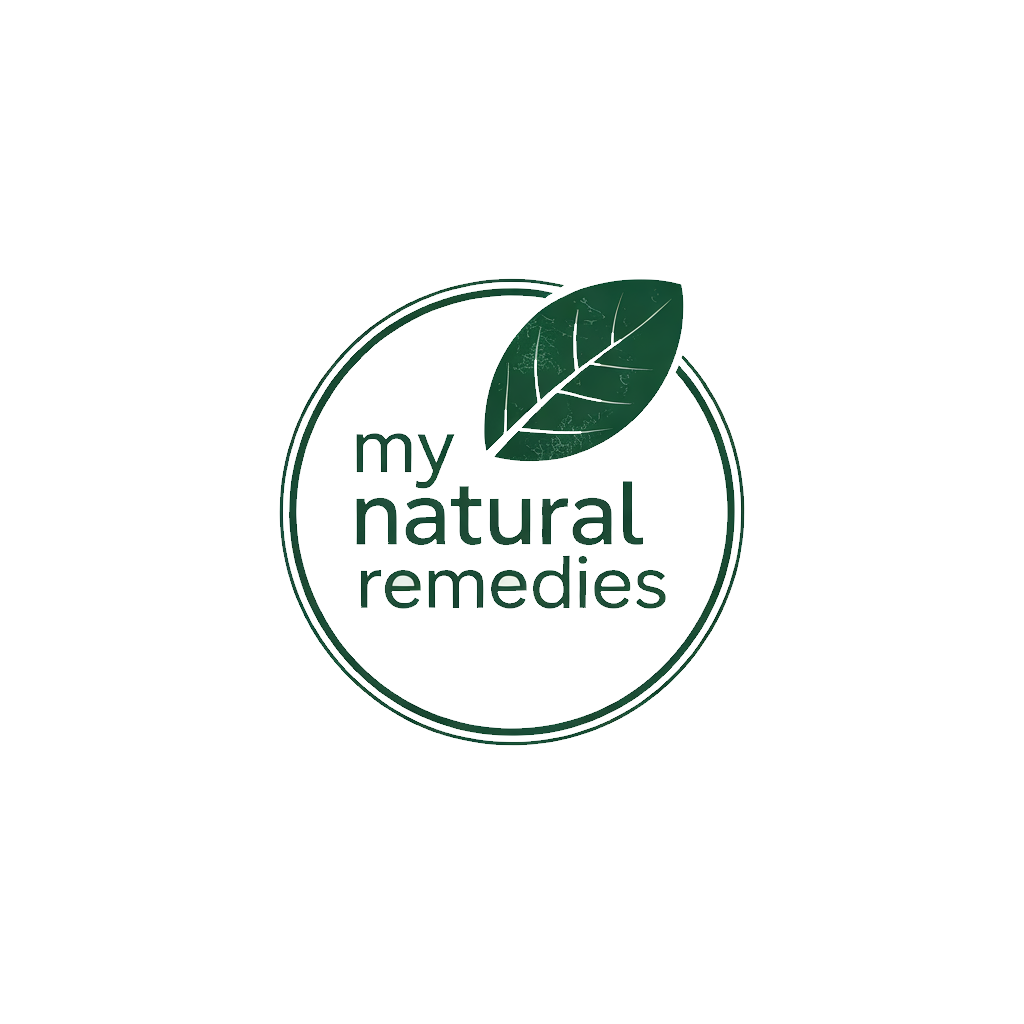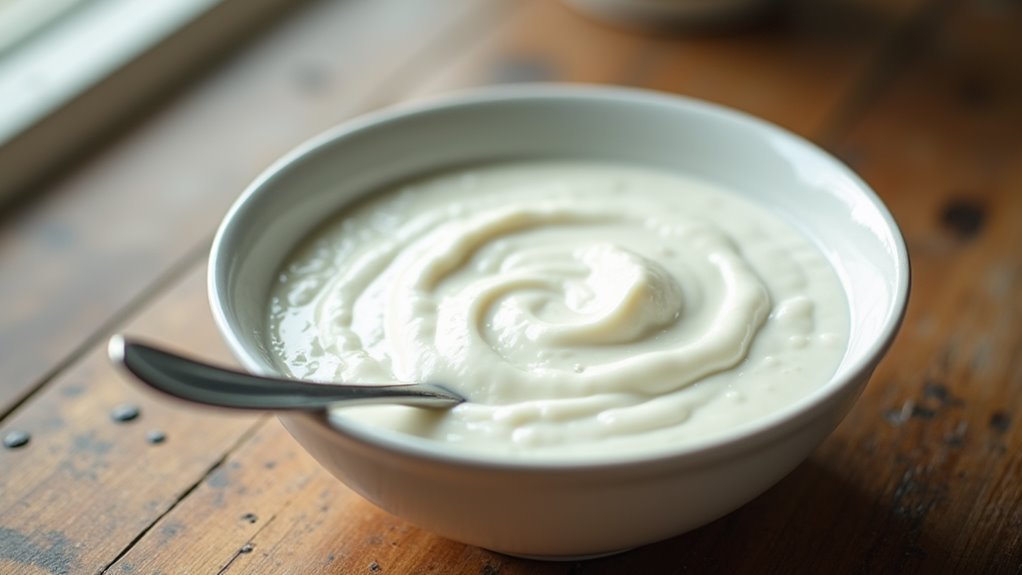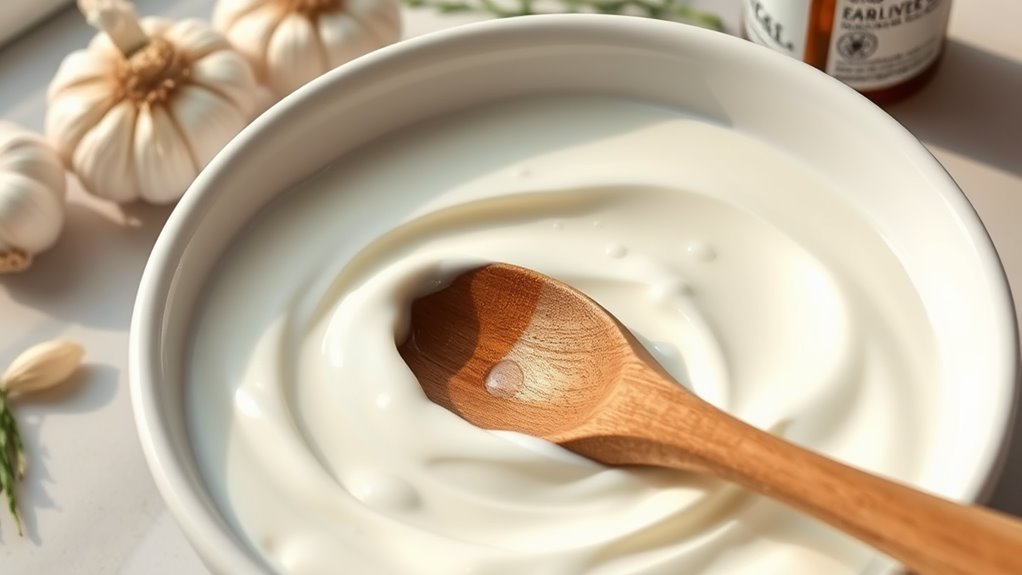Quick Relief- Top 5 Yeast Infection Remedies You Can Try at Home!
You can find fast relief from yeast infection symptoms with these proven home remedies. Try applying diluted tea tree oil or coconut oil directly to affected areas, take a warm apple cider vinegar bath, insert a peeled garlic clove overnight, or use plain Greek yogurt as a topical treatment. Remember to wear loose cotton clothing and avoid sugar while healing. These natural solutions offer powerful antifungal benefits, but there’s much more to know about treating yeast infections effectively.
Understanding Yeast Infections: Causes and Symptoms
While yeast infections can affect various parts of the body, they most commonly occur in warm, moist areas like the vagina, mouth, and skin folds. When you’re dealing with an overgrowth of Candida fungus, you’ll likely experience intense itching, redness, and a burning sensation.
You might also notice a thick, white, cottage cheese-like discharge and discomfort during urination or intercourse.
Several factors can trigger these uncomfortable infections, including antibiotics, high blood sugar, hormonal changes, and a weakened immune system.
Even tight-fitting clothes or scented hygiene products can upset your body’s natural balance. Maintaining proper hygiene is essential to prevent such infections and promote overall health.
While you’re probably eager to find yeast infection remedies fast, it’s important to first understand your symptoms and their potential causes. This knowledge will help you choose the most effective treatment and prevent future infections.
Natural Antifungal Treatments From Your Kitchen
Before reaching for over-the-counter medications, you might be surprised to find effective yeast infection remedies right in your kitchen cabinets. Many common ingredients have natural antifungal properties that can help fight Candida overgrowth.
Coconut oil stands out as a powerful remedy due to its lauric acid content, which fights fungal infections. You can apply it directly or add it to your diet.
Apple cider vinegar, another kitchen staple, helps restore your body’s pH balance – just add two tablespoons to a warm bath.
Greek yogurt contains beneficial probiotics that combat yeast growth when applied topically or consumed.
Garlic, nature’s antibiotic, offers potent antifungal benefits. You can eat it raw, cook with it, or insert a peeled clove overnight.
Don’t forget about tea tree oil – though not technically from your kitchen, this natural antiseptic mixed with coconut oil creates an effective treatment that many women trust. Additionally, incorporating probiotic foods into your diet can further support your body’s defenses against yeast infections.
Essential Oils and Herbal Solutions
Although essential oils and herbs shouldn’t replace medical treatment for severe infections, many women find relief using these natural alternatives.
Tea tree oil stands out as a powerful antifungal option – just add a few drops to a carrier oil like coconut oil before applying. You’ll also find oregano oil effective when properly diluted, as it contains potent compounds that fight fungal growth.
Looking to herbs? You’re in good company with calendula, which soothes irritation while combating yeast. Steep the dried flowers in hot water to make a healing wash.
Another trusted option is goldenseal root, which you can use as a topical treatment by mixing the powder with water to form a paste. Probiotics help maintain gut health and can further support your efforts in managing yeast infections.
Remember to test any new treatment on a small area first, and stop if you experience discomfort.
Many women in our community have found success combining these remedies with proper hygiene and dietary changes.
Lifestyle Changes to Speed Up Recovery
Since recovery requires a holistic approach, making smart lifestyle adjustments can significantly boost your healing process.
You’ll want to focus on changes that support your body’s natural ability to restore balance and fight off unwanted yeast growth. While following your treatment plan, these lifestyle modifications can help you feel better faster and prevent future infections.
- Wear breathable, cotton underwear and loose-fitting clothes to reduce moisture and heat that yeast thrives in.
Change out of wet swimsuits or sweaty workout clothes immediately, and avoid sitting in damp clothing.
- Cut back on sugar and refined carbs in your diet, as these feed yeast.
Instead, add probiotic-rich foods like yogurt, kimchi, and kefir to support healthy gut flora. Incorporating probiotic-rich foods can also help restore the natural balance of beneficial bacteria in your body.
- Take warm baths with no bubble bath products, and pat the area dry thoroughly.
Avoid hot tubs and very hot baths until your infection clears up completely.
Warning Signs: When to Visit Your Doctor
While many yeast infections can be treated with over-the-counter remedies, certain symptoms require immediate medical attention. If you’re experiencing any of the warning signs listed below, don’t hesitate to contact your healthcare provider.
| Symptom | What to Look For | Action Needed |
|---|---|---|
| Fever | Temperature above 101°F | Seek immediate care |
| Unusual Discharge | Green, gray, or chunky | Visit doctor within 24h |
| Severe Pain | Intense burning or swelling | Same-day appointment |
| Recurring Issues | 4+ infections per year | Schedule consultation |
You’ll also want to see your doctor if you’re pregnant, have diabetes, or aren’t sure if it’s really a yeast infection. Remember, there’s no shame in seeking professional help – it’s actually the smart thing to do when these symptoms appear. Your doctor’s seen it all before and is there to help you get back to feeling your best. Additionally, it’s important to note that yeast overgrowth can be influenced by factors such as a weakened immune system and hormonal changes, which may require further evaluation by your healthcare provider.
Frequently Asked Questions
Can Yeast Infections Affect Men, or Are They Exclusively a Women’s Health Issue?
You’ll find that yeast infections can affect both men and women. While they’re more common in women, men can develop them in warm, moist areas like the genitals and mouth.
How Long After Treating a Yeast Infection Can I Safely Resume Sexual Activity?
You’ll want to wait until all symptoms have cleared completely, typically 1-2 weeks after finishing treatment. It’s best to check with your healthcare provider before resuming intimate activities.
Will Getting a Yeast Infection Make Me More Susceptible to Future Infections?
Yes, you’re more likely to get future yeast infections once you’ve had one. You can reduce your risk by maintaining good hygiene, wearing breathable fabrics, and keeping your immune system strong.
Is It Safe to Use Yeast Infection Treatments During Pregnancy?
You’ll want to consult your doctor before using any yeast infection treatments during pregnancy. While some over-the-counter options are safe, others could harm your baby’s development.
Can Swimming Pools or Hot Tubs Increase My Risk of Getting Yeast Infections?
Yes, you’re more likely to get yeast infections from pools and hot tubs. The chlorine can disrupt your natural pH balance, while warm, moist environments help yeast thrive in your body.





